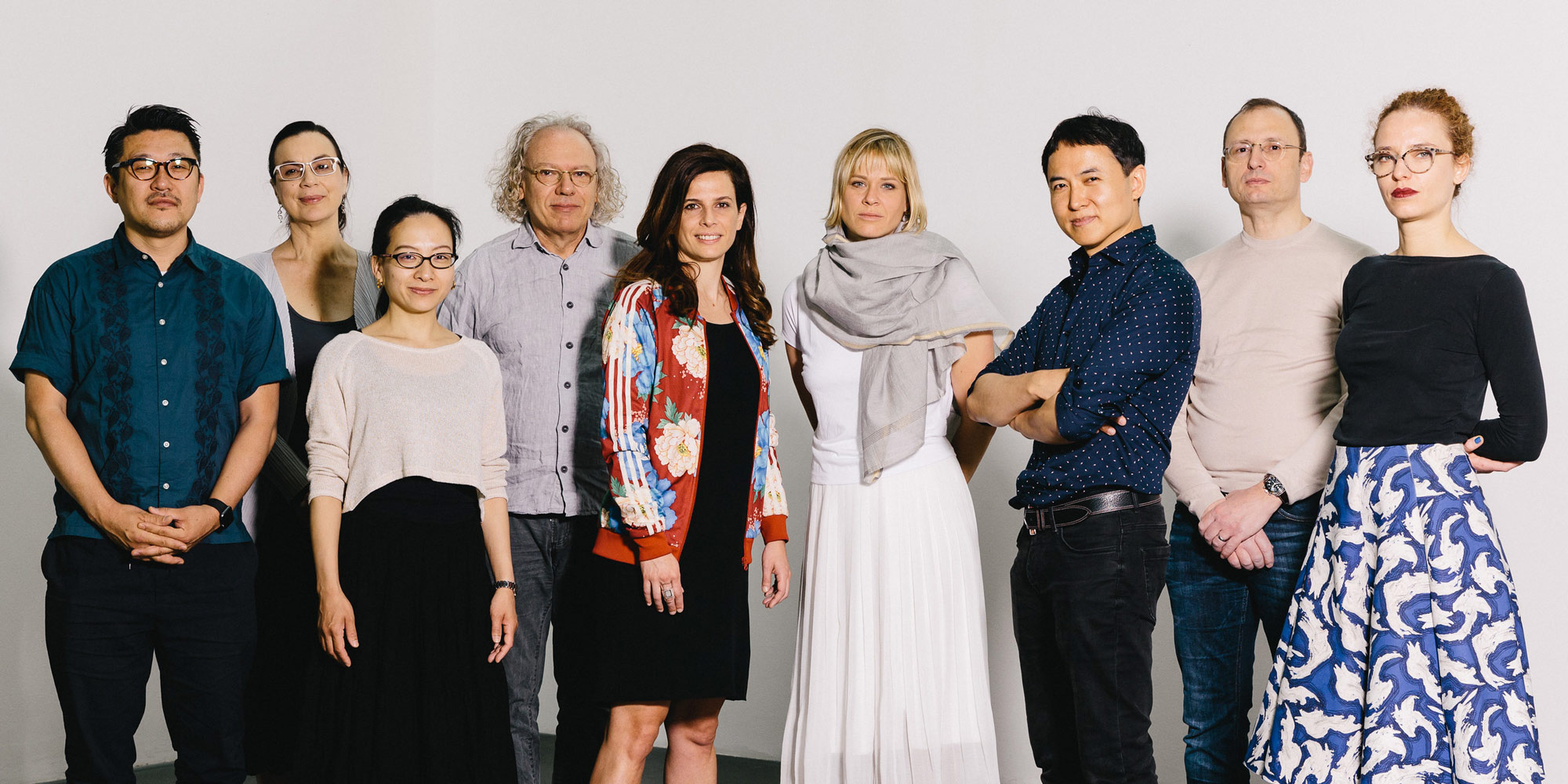2018 S+T+ARTS Prize Jury
All nominations are judged by a jury to decide on the two prize-winning projects and up to ten honorary mentions.

Francesca Bria (IT) is Senior Advisor and Expert on technology and innovation policies. She has a PhD in Innovation Economics from Imperial College, London and an MSc in Digital Economy from University of London, Birbeck. As Senior Programme Lead at Nesta, the UK Innovation Agency, she has led the EU D-CENT project, the biggest European Project on direct democracy and digital currencies. She also led the DSI project on Digital Social Innovation in Europe, advising the EU on digital social innovation policies. She has taught at several universities in the UK and Italy and she has advised Governments, public and private organizations and movements on technology and innovation policies, and their socio-economic impact. Francesca Bria is an adviser to the European Commission on Future Internet and Innovation Policy and she heads the DECODE project on data sovereignty in Europe. She is currently the Commissioner of Digital Technology and Innovation for the city of Barcelona.

Andrej Heinke (DE) is director for corporate foresight and technology strategy at Robert Bosch GmbH, a technology company based in Stuttgart. Previously he worked for the policy planning department of the German Foreign Ministry, Daimler AG, and Sony Corp., after having completed his studies at Harvard’s Kennedy School of Government and Free University of Berlin with a PhD.
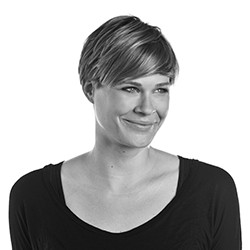
Sophie Lamparter (CH) is founder and CEO of DART, a testing lab bringing Design, Art, Research and Technology together to create clever human-machine interfaces. DART works with research projects and early startups, enterprises and investors. Sophie Lamparter’s passion is finding new ideas and talent with a creative approach to technology. She helps them scale their ideas and consults with organization to challenge the status quo and launch new partnerships. Before starting DART, she was Associate Director at swissnex San Francisco, Switzerland’s Innovation outpost in Silicon Valley. Sophie Lamparter has organized and curated interdisciplinary exhibitions and programs in media, digital and data arts, interaction and game design, robotics, VR, AR, architecture and urbanism. She deputed as a STARTS Prize juror in 2017 and has spoken at international events such as SXSW in Austin, Gray Area in San Francisco and the Lift Conference in Geneva.
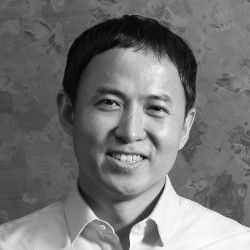
Daehyung Lee (KR), art critic, curator, and POWER LEADER 2012 acclaimed by Forbes Korea, has been curating contemporary Asian art for the last 17 years. He curated Korean Eye Moon Generation in 2009 and its nomadic show until 2012 at Saatchi Gallery in London. Currently he leads Hyundai Motor’s ARTLAB and its global art partnerships that include MMCA’s Hyundai Motor Series to Tate Modern’s Hyundai Commission, LACMA’s The Hyundai Project, Bloomberg Brilliant Ideas. Most recently, he curated “Counterbalance: The Stone and the Mountain” at the Korean Pavilion, La Biennale di Venezia 2017 and the Max Mara Coats! Seoul in 2017. He holds an MA in Curatorial Studies from Columbia University in New York and has advised the interdisciplinary playground ZER01NE (2018), Gwangju Biennale (2016), Busan Biennale (2014) and Cheongju Craft Biennale (2013).
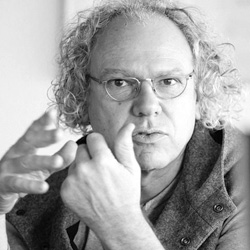
Alexander Mankowsky (DE), born in Berlin 1957, studied Social Science, Philosophy and Psychology at the ‘Freie Universität Berlin’. In 1989 he started working in the research institute of Daimler in Berlin. The multidisciplinary approach in the institute integrated a wide array of disciplines, from social sciences to artificial intelligence. His current working topics are Futures Studies, focussed on the ever changing culture of mobility, the interdependency of social and technological innovation and other aspects of envisioning paths into the future.

Seiichi Saito (JP), born in Kanagawa in 1975, began his career in New York in 2000 after graduating from Columbia University with a Master of Science degree in Advanced Architectural Design (MSAAD). Since then, he has been active in creative work at the Arnell Group, and returned to Japan upon being selected for the Echigo-Tsumari Art Triennial event. He produces works in the commercial art field which are three-dimensional and interactive while also being based on a firm grounding in logical thought that he cultivated through architecture. Seiichi Saito has won numerous international awards since 2009. He currently serves as Director of Rhizomatiks Co., Ltd., while also lecturing part-time at the Department of Graphic Design in the Faculty of Kyoto Seika University. In addition, he was member of the 2013 D&AD “Digital Design” Jury, 2014 Cannes LIONS “Branded Content and Entertainment” jury and Good Design Award 2015-2017 Jury. Seiichi Saito also acted as Milan Expo Japan pavilion theatre space director and Media Art Director at Roppongi Art Night 2015.
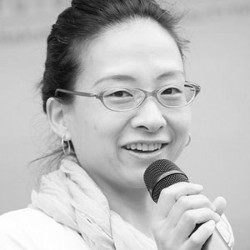
Kazuko Tanaka (JP) joined Hakuhodo in 1998 and started her career in account services, further expanding into new business development with leading foreign marketing firms—and at the same time having 3 children. On belief that working mothers, still a minority in Japan, need a place to share information and ideas, she started the “Hakuhodo Working Moms’ Link” in 2012, networking across over 50 companies/ 500 working mothers through “Lunchcation – lunchtime communication” actions. Kazuko joined VoiceVision Inc. in July 2013 as one of its founding members, serving as community producer and facilitates community projects for companies and local governments. Also, Kazuko has been on the joint team project between Hakuhodo and Ars Electronica – Ars Electronica Tokyo Initiative – and has operated four seasons of Future Innovators Summit at the Ars Electronica Festival.

Alex Verhaest (BE) is a filmmaker investigating the possibilities of interactivity and responsivity within cinematic arts. The basis of her films is a highly narrative script, existing or newly written, around which she creates a cinematic installation consisting of objects, videos and interactive videos. Her work operates on the juxtaposition of painting, video game and cinema extended. With each new film, Alex Verhaest dives into what it means to make films in a multi-screen post-Nintendo society. Her work has been selected by several arts and new-media festivals and competitions; i.e. the FILE electronic language festival in Sao Paolo, the New Technology Art Award in Gent, TAZ Oostende and Arts Festival Watou, and her work is featured in the Akzo Nobel Collection. Alex Verhaest has won the prestigious Japanese Media Arts New Face Award as well as the Golden Nica in 2015 in Ars Electronica’s Computer Animation/Film/VFX category.
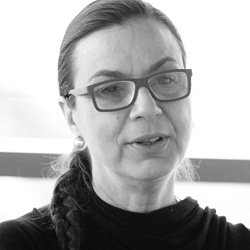
Victoria Vesna (US), Ph.D., is an Artist and Professor at the UCLA Department of Design | Media Arts and Director of the Art|Sci center at the School of the Arts and California Nanosystems Institute (CNSI). With her installations she investigates how communication technologies affect collective behavior and perceptions of identity shift in relation to scientific innovation (PhD, University of Wales, 2000). Her work involves long-term collaborations with composers, nano-scientists, neuroscientists, evolutionary biologists and she brings this experience to students. She is the North American editor of AI & Society and in 2007 published an edited volume – Database Aesthetics: Art in the Age of Information Overflow and another in 2011 – Context Providers: Conditions of Meaning in Media Arts.
2018 S+T+ARTS Prize Nomination Committee
All submissions are judged by a nomination committee in the order of their arrival. The nomination committee selects up to 30 projects to nominate for prize consideration by the jury.

Francesca Bria (IT) is Senior Advisor and Expert on technology and innovation policies. She has a PhD in Innovation Economics from Imperial College, London and an MSc in Digital Economy from University of London, Birbeck. As Senior Programme Lead at Nesta, the UK Innovation Agency, she has led the EU D-CENT project, the biggest European Project on direct democracy and digital currencies. She also led the DSI project on Digital Social Innovation in Europe, advising the EU on digital social innovation policies. She has taught at several universities in the UK and Italy and she has advised Governments, public and private organizations and movements on technology and innovation policies, and their socio-economic impact. Francesca Bria is an adviser to the European Commission on Future Internet and Innovation Policy and she heads the DECODE project on data sovereignty in Europe. She is currently the Commissioner of Digital Technology and Innovation for the city of Barcelona.

Andrej Heinke (DE) is director for corporate foresight and technology strategy at Robert Bosch GmbH, a technology company based in Stuttgart. Previously he worked for the policy planning department of the German Foreign Ministry, Daimler AG, and Sony Corp., after having completed his studies at Harvard’s Kennedy School of Government and Free University of Berlin with a PhD.

Sophie Lamparter (CH) is founder and CEO of DART, a testing lab bringing Design, Art, Research and Technology together to create clever human-machine interfaces. DART works with research projects and early startups, enterprises and investors. Sophie Lamparter’s passion is finding new ideas and talent with a creative approach to technology. She helps them scale their ideas and consults with organization to challenge the status quo and launch new partnerships. Before starting DART, she was Associate Director at swissnex San Francisco, Switzerland’s Innovation outpost in Silicon Valley. Sophie Lamparter has organized and curated interdisciplinary exhibitions and programs in media, digital and data arts, interaction and game design, robotics, VR, AR, architecture and urbanism. She deputed as a STARTS Prize juror in 2017 and has spoken at international events such as SXSW in Austin, Gray Area in San Francisco and the Lift Conference in Geneva.

Daehyung Lee (KR), art critic, curator, and POWER LEADER 2012 acclaimed by Forbes Korea, has been curating contemporary Asian art for the last 17 years. He curated Korean Eye Moon Generation in 2009 and its nomadic show until 2012 at Saatchi Gallery in London. Currently he leads Hyundai Motor’s ARTLAB and its global art partnerships that include MMCA’s Hyundai Motor Series to Tate Modern’s Hyundai Commission, LACMA’s The Hyundai Project, Bloomberg Brilliant Ideas. Most recently, he curated “Counterbalance: The Stone and the Mountain” at the Korean Pavilion, La Biennale di Venezia 2017 and the Max Mara Coats! Seoul in 2017. He holds an MA in Curatorial Studies from Columbia University in New York and has advised the interdisciplinary playground ZER01NE (2018), Gwangju Biennale (2016), Busan Biennale (2014) and Cheongju Craft Biennale (2013).

Alexander Mankowsky (DE), born in Berlin 1957, studied Social Science, Philosophy and Psychology at the ‘Freie Universität Berlin’. In 1989 he started working in the research institute of Daimler in Berlin. The multidisciplinary approach in the institute integrated a wide array of disciplines, from social sciences to artificial intelligence. His current working topics are Futures Studies, focussed on the ever changing culture of mobility, the interdependency of social and technological innovation and other aspects of envisioning paths into the future.

Seiichi Saito (JP), born in Kanagawa in 1975, began his career in New York in 2000 after graduating from Columbia University with a Master of Science degree in Advanced Architectural Design (MSAAD). Since then, he has been active in creative work at the Arnell Group, and returned to Japan upon being selected for the Echigo-Tsumari Art Triennial event. He produces works in the commercial art field which are three-dimensional and interactive while also being based on a firm grounding in logical thought that he cultivated through architecture. Seiichi Saito has won numerous international awards since 2009. He currently serves as Director of Rhizomatiks Co., Ltd., while also lecturing part-time at the Department of Graphic Design in the Faculty of Kyoto Seika University. In addition, he was member of the 2013 D&AD “Digital Design” Jury, 2014 Cannes LIONS “Branded Content and Entertainment” jury and Good Design Award 2015-2017 Jury. Seiichi Saito also acted as Milan Expo Japan pavilion theatre space director and Media Art Director at Roppongi Art Night 2015.
2018 S+T+ARTS Prize Advisors
20 international advisors who have reputation and credibility in the field recommend projects and help to encourage wider ranges of participants as well as a geographical and gender balance.
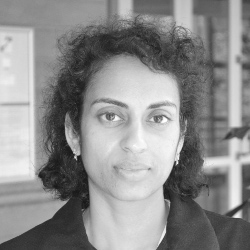
Rama Akkiraju (US) is a Director, Distinguished Engineer, and Master Inventor at IBM’s Watson Division where she leads the AI mission of enabling natural, personalized and compassionate conversations between computers and humans. In her career, Rama Akkiraju has worked on agent-based decision support systems, electronic marketplaces, and semantic Web services, for which she led a World-Wide-Web (W3C) standard. Rama holds a master’s degree in Computer Science and has received a gold medal from New York University for her MBA for highest academic excellence. She currently serves as the President for ISSIP, a Service Science professional society, for 2018.

Jussi Ängeslevä (FI) is a designer, an artist and an educator. With home base at the Berlin University of the Arts and the Royal College of Arts, but lecturing around the planet, he is working with digital materiality and interaction design. In parallel to the academic work, he is the Vice Creative Director of ART+COM studios. His design ethos is leveraging hardware, software, physical and graphic design in the search for elegance in highly specific solutions, where the meaning of a work is inseparable from the medium communicating it.

Camille C. Baker (CA/UK) is a Reader at the School of Communication Design, University for the Creative Arts, Epsom, UK. She is also a media artist-performer/researcher/curator who has done recent work in participatory mobile and sensor performance using wearable technologies, and is now exploring creative coding and electronic development for smart-fashion projects. Her other research interests have included: responsive interfaces and environments, video art and live cinema, experience design, telematics, networked communities, web animation, digital media curating, and music composition and performance.
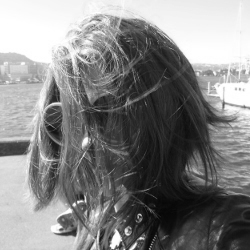
Régine Debatty (BE) s a writer, curator, critic, and founder of we-make-money-not-art.com, a blog which received 2 Webby awards and an honorary mention at the STARTS Prize. Régine Debatty writes and lectures internationally about the way in which artists, hackers, and designers use technology as a medium for critical discussion. She also created A.I.L. (Artists in Laboratories), a weekly radio program about the connections between art and science for Resonance 104.4 FM in London (2012–14), and is co-author of the “sprint book” New Art/Science Affinities published by Carnegie Mellon University.

Chiaki Hayashi (JP) is the co-founder and is currently the Representative Director of Loftwork Inc. Loftwork succeeds to annually produce over 600 projects. She manages the operation of the company’s creative platform Loftwork.com which has 25,000 creators registered, FabCafe which is a cafe with digital fabrication tools, and a material-centered co-working office MTRL. She is currently Japan Liaison to the Director at the MIT Media Lab. She has recently founded “Hidakuma” which aims to rebuild nature and local creativity.
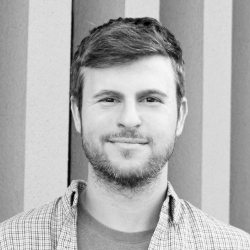
Nadav Hochman (IL) is the director of a digital art initiative at The Tech Museum of Innovation (Silicon Valley, CA, USA), catalyzing new collaborations between global artists, industry, and research institutions. Prior to joining The Tech, Nadav Hochman led acclaimed projects in the startup industry, academia, and the art world. His work has been featured in media outlets such as Popular Science, The Atlantic, Wired, and The Guardian. Nadav Hochman holds a PhD in Art and Information Science.

Mohamed Hossam (EG) is a Media Artist, Art Manager and Educator based in Cairo. He is the founder of Creative Coding Cairo and Cairo Media Lab, the Interaction Design Mentor at Fab Lab Egypt, a member of the Curatorial team at Cairotronica International Symposium for new media, and a speaker at Node Forum & Ars Electronica. He is starting work on his MFA in Computational Arts at Goldsmith, London University, 2018. He previously attended VVVV Academy in Berlin and studied Art Education at Helwan University. He was an EMUNI University Fellow in Slovenia and an award-winning artist at The Egyptian Academy of Fine Arts in Rome in 2017. He has exhibited at such venues as the National Museum of Wales, Cairotronica Symposium, Goethe Institute and Opera House.

Maša Jazbec (SI) is an artist, curator and academic researcher. She holds a PhD in human informatics from the Univ. of Tsukuba and an MA in interactive art from the Interface Culture program at the Univ. of Arts and Design Linz. She was a visiting researcher at Ishiguro Laboratory at ATR. She is engaged in the vision and execution of the Trbovlje New Media Setting project in Slovenia, and organizes events integrating science, art and technology at the new media culture festival Speculum Artium.
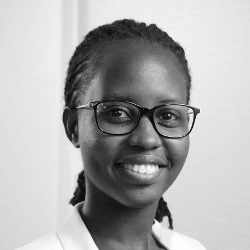
Brenda Katwesigye (UG) is the founder and CEO of Wazi Vision, a company that builds mobile technologies for diagnosis of eye defects and provides eyeglasses made from recycled material to school children in Uganda. She is passionate about creating sustainable solutions that make health care more accessible, available and affordable. Brenda holds a bachelor’s degree in Telecommunication Engineering and is a Certified Information Systems Auditor. Her passion for technology has led her to teach herself programming in Python, Java and Ruby on Rails, which has furthered her mobile technology exploits. She is a calculated risk-taker with deep tech industry knowledge and has championed various mobile health care solutions.

Pascal Keiser (FR) has developed transversal projects between culture, digital society and economy since 2003. He is co-founder and general coordinator of French Tech Culture since the end of 2013, the national cultural and digital label of the French government. He is co-founder of The Bridge, European accelerator of startups on crossovers culture & technology in Avignon, and was director of Technocité Creative Industries Knowledge Center in Mons from 2007 to 2017. He also directed the digital program of Mons 2015, European Capital of Culture, and is a member of the steering committee of the new H2020 VERTIGO STARTS program.
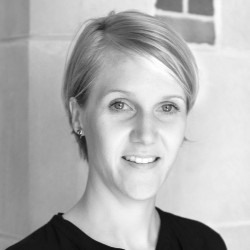
Silvia Lindtner (AT) is an assistant professor at the University of Michigan in the School of Information, with a courtesy appointment in the Penny W. Stamps School of Art and Design. Silvia Lindtner’s research and teaching interests include critical studies of innovation and entrepreneurship, DIY (do it yourself) making and hacking, science and technology studies in China, urban and infrastructure studies.

Kenric McDowell (US) has worked at the intersection of culture and technology for twenty years. His résumé includes work for Nike, Focus Features, HTC Innovation and Google. He currently leads the Artists + Machine Intelligence program at Google Research, where he facilitates collaboration among Google AI researchers, artists and cultural institutions. Kenric McDowell’s work often draws from the history of culture and philosophy for metaphors and models that can be applied to emerging 21st century culture and technology.

Eurico Neves (PT) is the CEO and founder of INOVA+ S.A., a leading European firm in innovation services. He is also a venture capitalist who has created or supported more than 15 new firms in the ICT field since 1997. Before that, he worked for the European Commission in Luxembourg between 1994 and 1997 and participated in the team developing the European Green Paper on Innovation in 1995. He was a member of the Business Chamber of the Enterprise Policy Group of the European Commission, an advisory board to Vice-President Tajani on innovation and entrepreneurship matters, and a renowned expert and evaluator of many European programmes in the field of innovation, entrepreneurship and research.

Angela Oguntala (US) is a director at Greyspace, a design and futures consultancy. She has led foresight projects and advised global organizations from education to healthcare to various industries looking to understand the possible impacts of near-future technologies and cultural shifts. Angela Oguntala previously headed up a lab in Copenhagen, a group focused on designing and experimenting around emerging technologies.
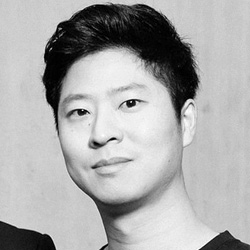
Erick Oh (US) is a Korean filmmaker / animator based in California, USA. His independent films have premiered and been honored at numerous international film festivals including Student Academy Awards, Annie Awards, Annecy Animation Festival, Hiroshima Animation Festival, Zagreb Film Festival, SIGGRAPH, Anima Mundi et al. After receiving his BFA from the Fine Art Department at Seoul National University and his MFA from UCLA’s film program, Erick worked at Pixar Animation Studios from 2010 to 2016 as an animator and participated in Oscar-winning films such as ‘Inside Out’ and ‘Finding Dory’. Erick Oh recently joined Tonko House, founded by Dice Tsutsumi and Robert Kondo, also former Pixar artists, to write and direct ‘PIG : The Dam Keeper Poems’. Erick Oh was also nominated at the Annie Awards 2017 as Best Animator.
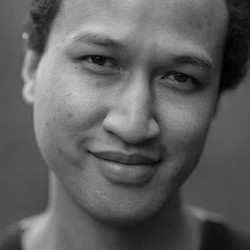
Heritiana Ranaivoson (BE/FR) is Senior Researcher and Project Leader at imec-SMIT-Vrije Universiteit Brussel (Belgium). He is currently coordinating the EU H2020 WEAR Sustain project, which supports teams of artists and technologists to develop ethical and sustainable wearables. Before joining imec, he was associate researcher at Cerna, the Centre for Industrial Economics at Mines ParisTech (2008-2010). He holds a PhD in Industrial Economics from Université Paris 1, Panthéon-Sorbonne.
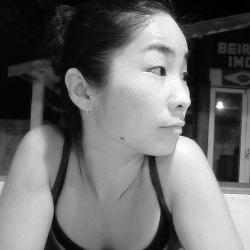
Mika Satomi (JP/AT) is a designer and an artist exploring the field of eTextiles, Interaction Design and Physical Computing. For five semesters, she has been a guest professor at the Weissensee Art Academy Berlin. She has worked as a researcher at the Swedish School of Textiles and at the Distance Lab, Scotland in the field of practice based design research. She holds BA in graphic design from Tokyo Zokei University, and MA in media creation from IAMAS, Japan. Since 2006 Mika Satomi has collaborated with Hannah Perner- Wilson, forming the collective KOBAKANT creating artistic projects in the field of eTextiles and Wearable Technology Art. She is a coauthor of the e-Textile online database “How To Get What You Want”.
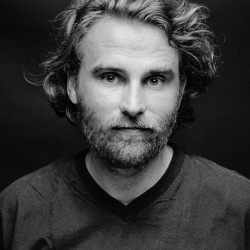
Bastian Schäfer (DE), born in 1980, is a maverick, kitesurfer, TED speaker, father of a boy and a girl and automotive engineer. After working at Volkswagen Design he entered Airbus in 2006 in different projects for A340, A350 and A380. In 2009 he joined the project team that created the award winning Airbus Concept Cabin with its’ bionic structure. Bastian Schäfer is the project leader of the Bionic Partition project where he is focussing on generative design combined with 3D printing technology.
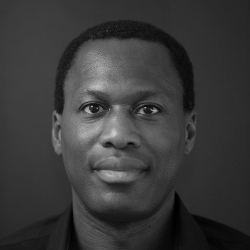
Jacques Vermeulen (BE) has been Nokia’s Global Go To Market Lead for Smart Cities developing strategy, solutions, partnerships and business since 2009. Jacques Vermeulen is passionate to tap into his ICT, digital video, Smart City eco-system and customer experience in order to help build sustainable urban development. Prior to his current role, Jacques Vermeulen was in business development and sales for Alcatel-Lucent since 1998, in R&D for speech recognition, as well as ICT lead in the early 90’s for the world’s first full digital audiovisual editing, production and television broadcast company. This was followed by business development and sales for these systems in Europe. He received an MS degree in Computer Science in 1990 and resides in Belgium.
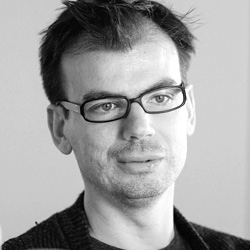
Filip Visnjic (UK) is a lecturer, curator and a media technologist born in Belgrade now living in London. He is the founder and editor-in-chief of CreativeApplications.Net. The site tirelessly beat reports innovation across the field and catalogues projects, tools and platforms relevant to the intersection of art, media, and technology. In 2012, Filip Visnjic co-founded Resonate, new educational platform and a festival located in Belgrade, Serbia. Same year, he co-launched HOLO, magazine about art, science and technology and is currently ‘director of platform’ at FRM, working on a new canvas for digital art. He lectures at a number of universities in the UK.
2018 Jury Statement: Anticipatory Art Sci Futurists
Joint statement of the S+T+ARTS Prize’18 Nomination Committee (Francesca Bria, Andrej Heinke, Sophie Lamparter, Daehyung Lee, Alexander Mankowsky, Seiichi Saito) and the S+T+ARTS Prize Jury (Francesca Bria, Andrej Heinke, Sophie Lamparter, Daehyung Lee, Alexander Mankowsky, Seiichi Saito, Kazuko Tanaka, Victoria Vesna, Alex Verhaest).
From the total of 2,344 entries, 811 projects were directly submitted to S+T+ARTS Prize’18. These 811 entries were reviewed by an international expert group, the S+T+ARTS Prize Nomination Committee, consisting of Francesca Bria, Andrej Heinke, Sophie Lamparter, Daehyung Lee, Alexander Mankowsky, and Seiichi Saito. The group spent three days reviewing the many excellent applications during one of the first sunny weekends in Europe, and singled out 15 projects to be nominated for the S+T+ARTS Prize.
In parallel, the Prix Ars Electronica Juries were reviewing those projects that were submitted to S+T+ARTS Prize as well as to Prix Ars Electronica in the categories Computer Animation, Interactive Art+, and Digital Communities. Each jury was asked to select and to nominate five additional projects from their specific category for the S+T+ARTS Prize. For the final decisions, one representative of each of the Prix Ars Electronica Expert Juries joined the S+T+ARTS Prize Nomination Committee to form the S+T+ARTS Prize Jury, namely Alex Verhaest from the Computer Animation category, Victoria Vesna from Interactive Art +, and Kazuko Tanaka from Digital Communities. We made the decisions together as the S+T+ARTS Prize Jury.
S+T+ARTS Prize and the overall STARTS program of the European Commission send an important signal to the world supporting art, science, technology and industry collaborations. Everyone in the room understood the privilege of being able to review carefully what creative people worldwide are working on, what they care about, what they feel, and what they feel passionate about. 2,344 projects were submitted by artists, designers, entrepreneurs, companies and universities, individuals, collectives, communities, and institutions. All agreed that successful companies of tomorrow will actively include artists and designers. Targeted thinkers should combine forces with divergent thinkers—those who experiment in the wide-open space, who professionally wander, who are comfortable being uncomfortable. Only by looking at a problem from different perspectives will we find the best solutions. Europe with its strong and diverse cultural heritage, its artistic avant-garde, forward-thinking academia and long-standing industry is an excellent place to demonstrate the power of collaboration and become a global example on how we can co-create the future.
The jury analyzed the global tendencies that emerged throughout the review process and many controversies and questions were discussed at length. Topics that kept surfacing were related to concerns about the critical environmental issues of our planet—from pollution to wars and human suffering. Many projects submitted were concerned with water—from water quality to sea level rise and plastic in the water. The Great Pacific Garbage Patch, the billions of kilos of plastic covering the water surfaces can no longer be ignored. Artists, designers, entrepreneurs are not waiting anymore for corporations and politics to finally steer this sinking ship but propose their own solutions.
The jury also noted that the complicated and evolving relationship between humans and machines is still very much present as a topic of interest for artists and designers. Will these machines help us? Will they replace us? And who is making these decisions? A clear signal was registered—we should consider these complex interactions now and ask important questions such as: Is it ok to design virtual assistants who sound exactly like humans? How do we consider data and privacy when we speak about brain-computer interfaces? How can we understand and communicate with autonomous systems, like cars on the streets?
Finally, the jury also got a glimpse into what’s going on in the global mind and what the future might bring. Artists, scientists, designers, engineers working together are futuristas, or as Buckminster Fuller would say – Anticipatory Design Scientists who are preparing us for what is coming.
Considering the main trends that emerged, the jury was interested in picking visionary ideas for the future that look to practical applications which could have an impact on existing models of production and by extension society in general. The ultimate questions were whether the project pushes at the known boundaries and exhibits high technological and aesthetic sophistication as well as excellence in research.



